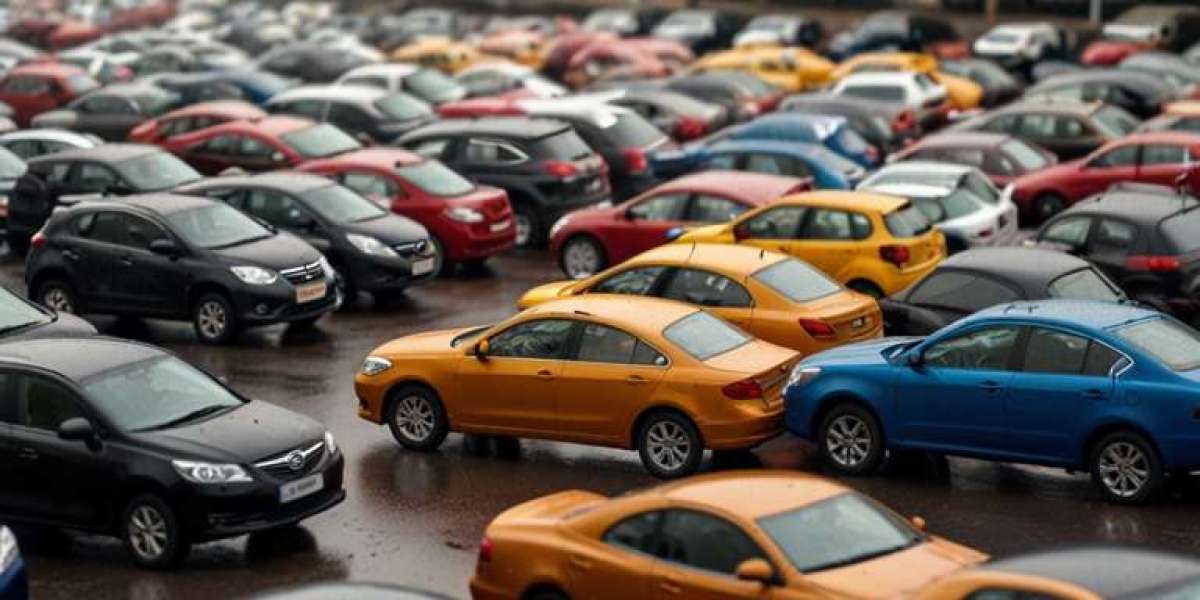The India Car Insurance Market, valued at approximately USD 3.30 billion in 2024, is projected to reach USD 4.82 billion by 2030, registering a CAGR of 6.58% from 2024 to 2030. This compelling growth trajectory is being primarily driven by regulatory mandates, rising consumer awareness, expanding vehicle ownership—especially of electric vehicles—and innovative product offerings that address evolving preferences and risk profiles.
Download Free Sample Report: https://www.techsciresearch.com/sample-report.aspx?cid=4241
? Industry Key Highlights
- Mandatory Coverage Fuels Base Awareness
Under the Motor Vehicles Act, third-party liability insurance is compulsory, ensuring a steady inflow of policyholders. More consumers are gravitating toward comprehensive policies as awareness grows around accident, theft, or natural disaster risks. - Product Innovation & Customization
Insurers are stepping up with specialized add-ons—zero depreciation, engine protection, roadside assistance, consumable covers, and more—to offer a personalized coverage experience aligned with modern-day needs. - Usage-Based Insurance (UBI) Movement
A wave of Pay-As-You-Drive (PAYD) and Pay-How-You-Drive (PHYD) models is emerging. These innovative schemes tie premium amounts to actual usage or driving practices, resonating strongly with urban consumers and safer drivers. - Electric Vehicle Insurance
With growing EV adoption, insurers are crafting policies that cater to EV-specific requirements—battery coverage, charging-station liability, and special repair protocols become key policy features. - Digital Underwriting & Distribution
Sales, renewals, and claim processes are increasingly digitized. Telematics, AI, and mobile-first platforms enable seamless, faster policy issuance and claim resolutions. Insurtechs play a key role here. - Regional Expansion of Demand
Demand is particularly strong in South India—Tamil Nadu, Karnataka, and Andhra Pradesh—driven by rapid vehicle growth, rising income levels, and tech-savvy consumers seeking comprehensive coverage. - Competitive Landscape
Major general insurers like ICICI Lombard, HDFC ERGO, Bajaj Allianz, Tata AIG, and national primary insurers vie aggressively, offering competitive prices and value-rich products. Insurtechs are key disruptors.
Emerging Trends
1. Shift Toward Telematics & Usage-Based Insurance
A growing appetite exists for personalized premium models. PAYD and PHYD policies leverage GPS/OBD data to offer reduced rates for low-mileage or cautious drivers. This encourages safe behavior and aligns cost with risk—a win-win for policyholders and insurers.
2. Digital Experiences Redefining Purchase & Claims
The industry is moving beyond traditional channels. AI-powered bots, chat-based claim filing, instant policy issuance, and AI-based fraud detection are taking center stage. Smooth digital interfaces deliver heightened customer satisfaction.
3. EV-Specific Insurance Packages
India’s EV transition mandates reinsurance products tailored to battery degradation, EV-specific parts, roadside charging breakdowns, and OEM-backed guarantees. Post-Covid, insurers are eager to provide robust coverage for these cost-sensitive assets.
4. Data Analytics & Underwriting Precision
Data intelligence—credit histories, repair cost patterns, weather analytics—is enabling precise risk assessment. Insurtechs and legacy firms use big data and machine learning to optimize underwriting, minimizing loss and maximizing profitability.
5. Rise of Insurtech Disruptors
Startups like Acko, Digit Insurance, and others are reshaping the sector through digital-first models, minimal overheads, hassle-free UPI payments, and itemized add-ons. Consumers benefit from transparent, user-friendly options.
6. Bundled & Cross-Sell Offerings
Major insurers are combining auto insurance with home, health, or travel coverage—offering bundled discounts and unified customer experiences via mobile apps. This strategy supports retention and loyalty.
7. Eco-Friendly Incentives
Tax breaks, government subsidies, and green financing push insurers to incentivize EV adoption—offering reduced premiums or cashback on environment-friendly policies.
8. Regulatory Simplification
The IRDAI is simplifying policy terms, reducing red tape, and pushing digital KYC mechanisms. Faster issuance and claim settlements spur wider adoption and enhance trust.
9. Regional Coverage Rising
Tier-2 and Tier-3 cities like Coimbatore, Vizag, and Mysuru are driving demand. Improved infrastructure and growing disposable incomes lead to broader insurance penetration.
10. Telematics for Corporate & Fleet Insurance
Fleet operators and cab aggregators deploy telematics-based risk management tools. Tracking unsafe behavior, reducing claim frequency, and optimizing premiums improves fleet policies and market competitiveness.
Market Dynamics & Key Drivers
| Driver | Impact |
|---|---|
| Mandatory Third Party (TP) | Regulatory mandate ensures base-level policy penetration. |
| Growing Comprehensive Uptake | Rising awareness drives shift from TP to full coverage. |
| EV Expansion | EV policies necessitate new insurance solutions tailored for EV risks. |
| Technology & Data Integration | AI, ML, and big data optimize pricing and underwriting. |
| Digital Platform Penetration | Online buying lowers entry barriers and enhances efficiency. |
| Rising Vehicle Ownership | Absorption of new cars, used cars, and shared mobility vehicles. |
| Insurtech Disruption | Low-cost, nimble models challenge legacy operations. |
| Regional Growth Trends | Income and digital adoption fuel regional demand, especially South India. |
| Government EV Push | Incentives boost EV insurance volume and product innovation. |
| Digitized Claims & Telematics | Efficient claim handling reduces costs and improves satisfaction. |
Competitive Analysis
Key Players & their Strategies
- ICICI Lombard General Insurance
- Modular products, usage-based insurance, user-friendly apps via Batua.
- HDFC ERGO
- Strong digital claim settlement and transparent add-on coverages.
- Bajaj Allianz
- Engine protection, zero depreciation, cashless garage tie-ups.
- Tata AIG
- Competitive pricing, localized agents, instant e-renewals.
- Bharati AXA, New India Assurance
- National presence with mixed agency, online, and bancassurance channels.
- Insurtechs (e.g., Acko, Digit)
- Digital-first, AI-driven underwriting, paperless operations, low premiums.
Competitive Factors
- Pricing efficiency – balancing profitability and affordability
- Product innovation – customizable add-ons, EV-specific policies
- Channel integration – digital, agent, bank, and tie-up networks
- Claims processing – instant claim settlement, AI-based fraud checks
- Brand equity – trust, transparency, and customer service excellence
Market Positioning Snapshot
- Traditional Insurers
– Deep financial reserves, legacy agent networks, slower digital pace. - Insurtech Startups
– Agile, transparent, lower premiums, but with nascent trust and service footprints. - EV-Focused Insurers
– Niche coverage, deep damaged-asset understanding, positioned ahead in trend.
Future Outlook
By 2030, the Indian car insurance market is expected to evolve significantly:
- Premium Volume & Market Size
Consistent growth to ~USD 4.82 billion, with a shift in composition—rising comprehensive and EV policies. - EV Insurance Boom
Forecast indicates EVs may comprise 10–15% of new vehicle sales, translating to new policy demand worth USD 500–700 million. - Digital & Telematics Focus
PAYD/PHYD could constitute ~25–30% of policies; telematics gains relevance across customer segments. - Rural & Regional Expansion
Tier-2/3 cities grow faster, aided by micro-insurance offerings via rural banking and digital wallets. - Cross-Industry Tie-Ups
Bundled offerings with vehicle loans, servicing platforms, parking aggregators, or EV charging networks will rise. - AI-Driven Ecosystem
Entire policy-to-claim lifecycle becomes digital, data-rich, and self-learning, reducing fraud and lowering premiums. - Sustainable & ESG Insurance
Coverage and incentive structures will favor green vehicles and fuel-efficient coverage options.
⚡ 10 Benefits of This Research Report
- Deep Market Forecasts – Reliable 2024–2030 outlook, revenue, CAGR by region.
- Segmentation Insights – Vehicle type, coverage type, premium type, provider.
- Regional Dynamics – India map highlights, with focus on high-growth areas.
- Emerging EV Trends – Policies, pricing strategy for electric vehicles.
- Digital Disruption Trends – Telematics, usage-based, and AI-driven policies.
- Competitive Landscape – Profiles of top companies and strategies.
- Consumer Behavior Analysis – Pricing sensitivity, add-on demands, channel shifts.
- Regulatory Context – Implications of the Motor Vehicles Act and IRDAI nudges.
- Growth Opportunities – Policy customization, rural insurance, mid-tier pricing.
- Risk Factors & Mitigation – Pricing pressures, fraud, regulatory thresholds.
Strategic Competitive Analysis
Strengths
- Legacy firms: Financial solidity, widespread agent networks, existing brand trust.
- Insurtech players: Speed, digital stack, personalized, low-cost proposals.
Weaknesses
- Legacy bottlenecks: Lengthy claim cycles, paper-heavy underwriting.
- Digital challengers: Limited physical presence, evolving claims servicing.
Opportunities
- Rise of EV coverage and add-ons
- Systematic penetration in tiered markets
- Tying up with fintech, auto financing, and mobility platforms
Threats
- Price competition eroding margins
- Fraud and cyber exposure in digital operations
- Regulatory changes around telematics and privacy concerns
Future Outlook
Looking ahead to 2030, the car insurance ecosystem in India stands at a critical inflection point. It will become increasingly digital, data-defined, and user-centric. Here's how it’s likely to unfold:
- Widespread Digitalization: Online issuance, claim processing, policy renewal through apps or direct SMS/WhatsApp bots.
- EV Ascendancy: Specialized EV insurance becoming mainstream, with features like battery health monitoring and green charging add-ons.
- Proliferation of PAYD/PHYD: Usage-based tariffs gaining traction amongst city drivers, corporations, and high-income households.
- Telematics & Telematics-Enhanced Insurance: Embedded in fleet or OEM channels—encouraging safer driving and predictive servicing.
- Rise of Rural Focus: Micro-insurance, satellite-based coverage options, average loss ratio management via risk pooling.
- Bundled Ecosystem Infrastructure: Insurance as part of a broader automotive experience—service, financing, mobility, and parking tied-in seamlessly.
Concluding Remarks
The India Car Insurance Market is maturing rapidly, propelled by regulation, rising incomes, digital technology, and evolving automotive trends like EVs. While USD 4.82 billion by 2030 is not just a number—it represents readiness for a deeply integrated, consumer-first insurance ecosystem.
Growth drivers like EV coverage, PAYD models, rural inclusion, and telematics-based policies will redefine the space. Traditional insurers must accelerate digital adoption and customer experience, even as insurtechs scale operations and build trust.
Contact Us-
Mr. Ken Mathews
708 Third Avenue,
Manhattan, NY,
New York – 10017
Tel: +1-646-360-1656
Email: [email protected]
Website: www.techsciresearch.com



